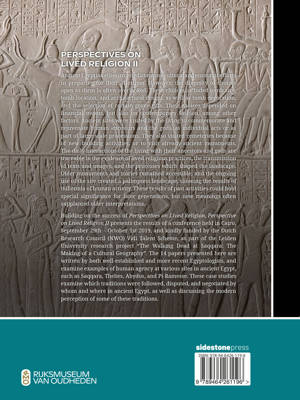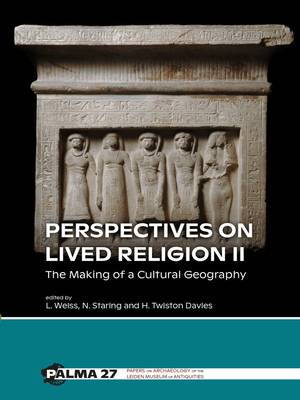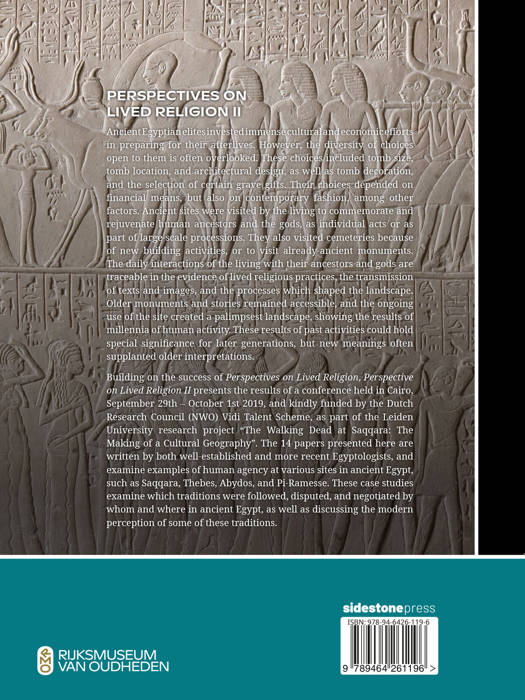
- Afhalen na 1 uur in een winkel met voorraad
- Gratis thuislevering in België vanaf € 30
- Ruim aanbod met 7 miljoen producten
- Afhalen na 1 uur in een winkel met voorraad
- Gratis thuislevering in België vanaf € 30
- Ruim aanbod met 7 miljoen producten
Zoeken


Omschrijving
Ancient Egyptian elites invested immense cultural and economic efforts in preparing for their afterlives. However, the diversity of choices open to them is often overlooked. These choices included tomb size, tomb location, and architectural design, as well as tomb decoration, and the selection of certain grave gifts. Their choices depended on financial means, but also on contemporary fashion, among other factors. Ancient sites were visited by the living to commemorate and rejuvenate human ancestors and the gods, as individual acts or as part of large-scale processions. They also visited cemeteries because of new building activities, or to visit already-ancient monuments. The daily interactions of the living with their ancestors and gods are traceable in the evidence of lived religious practices, the transmission of texts and images, and the processes which shaped the landscape. Older monuments and stories remained accessible, and the ongoing use of the site created a palimpsest landscape, showing the results of millennia of human activity. These results of past activities could hold special significance for later generations, but new meanings often supplanted older interpretations.
Building on the success of Perspectives on Lived Religion, Perspective on Lived Religion II presents the results of a conference held in Cairo, September 29th - October 1st 2019, and kindly funded by the Dutch Research Council (NWO) Vidi Talent Scheme, as part of the Leiden University research project "The Walking Dead at Saqqara: The Making of a Cultural Geography". The papers presented here are written by both well-established and more recent Egyptologists, and examine examples of human agency at various sites in ancient Egypt, such as Saqqara, Thebes, Abydos, and Pi-Ramesse. These case studies examine which traditions were followed, disputed, and negotiated by whom and where in ancient Egypt, as well as discussing the modern perception of some of these traditions.
Building on the success of Perspectives on Lived Religion, Perspective on Lived Religion II presents the results of a conference held in Cairo, September 29th - October 1st 2019, and kindly funded by the Dutch Research Council (NWO) Vidi Talent Scheme, as part of the Leiden University research project "The Walking Dead at Saqqara: The Making of a Cultural Geography". The papers presented here are written by both well-established and more recent Egyptologists, and examine examples of human agency at various sites in ancient Egypt, such as Saqqara, Thebes, Abydos, and Pi-Ramesse. These case studies examine which traditions were followed, disputed, and negotiated by whom and where in ancient Egypt, as well as discussing the modern perception of some of these traditions.
Specificaties
Betrokkenen
- Auteur(s):
- Uitgeverij:
Inhoud
- Aantal bladzijden:
- 160
- Taal:
- Engels
- Reeks:
- Reeksnummer:
- nr. 27
Eigenschappen
- Productcode (EAN):
- 9789464261196
- Verschijningsdatum:
- 27/10/2022
- Uitvoering:
- Paperback
- Formaat:
- Trade paperback (VS)
- Afmetingen:
- 216 mm x 272 mm
- Gewicht:
- 544 g

Alleen bij Standaard Boekhandel
+ 70 punten op je klantenkaart van Standaard Boekhandel
Beoordelingen
We publiceren alleen reviews die voldoen aan de voorwaarden voor reviews. Bekijk onze voorwaarden voor reviews.












